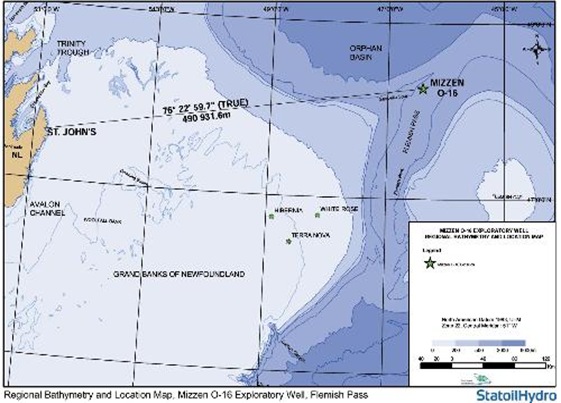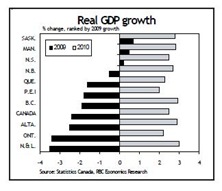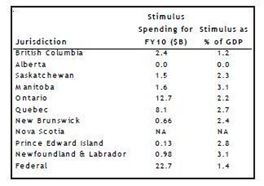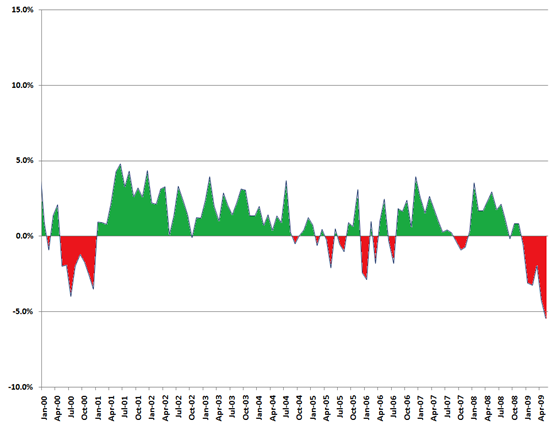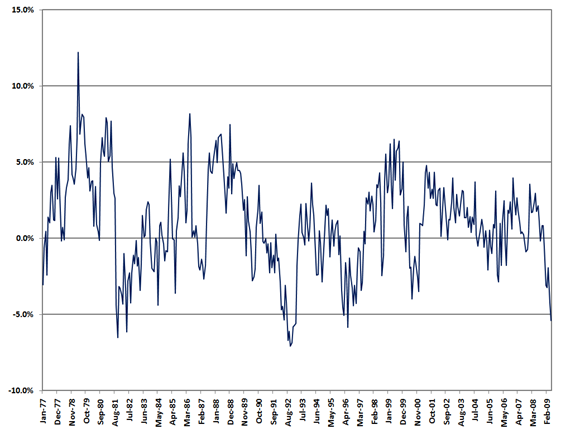Not surprisingly, the latest of Danny Williams public attacks against any contrary voices is stirring further revelations.
The biggest news this week was Williams verbal assault on talk show host Randy Simms for suggesting that maybe some other issues in the province – like the faltering fishery – needed some urgent attention.
Apparently, it wasn’t the only testy exchange between the two. Williams took a snotty tone with Simms during an exchange the week before over government’s role in a botched April announcement on breast cancer testing.
A caller to an open-line show Wednesday afternoon identified only as “Kevin” described his own experience with the political rant from a government member of the House of Assembly.
His crime?
Daring to voice an opinion in a local newspaper.
You’ll find the whole thing over at Geoff Meeker’s blog at the Telegram.
Farther down the post there’s a reference to Tom Marshall, minister of justice, who weighed in to support Williams in his tirade. Marshall – who is widely respected as knowledgeable and decent – sometimes winds up in these sorry positions defending his boss.
In late 2007 former Tory Premier Brian Peckford was on the receiving end of a Marshall scolding.
Curiously enough – in light of Randy Simms comments - Peckford had dared to suggest that perhaps the provincial government was too focused on oil and that other issues deserved greater attention. Peckford’s was a sensible and reasonable presentation.
Marshall’s on the other hand, was - uncharacteristically for him - a pile of misrepresentations and mindless Leader worship. It included this dig which Peckford certainly did not deserve:
And for him to say that we're focusing exclusively on oil and gas would be the same as saying that when he was office he focused exclusively on growing cucumbers, and we all know that's not true. But it's an asinine comment to make and he has to be held to account for it.
Marshall was right, except that the asinine comments were his. And on another level Marshall can be forgiven since he did help put Danny Williams in the job. Marshall was Williams’ west coast chair for the Tory leadership coronation in 2000-2001.
Marshall defends Williams in the most recent case by saying that if “you are against this province then he – and rightly so – is going to be your worst enemy.”
The only problem with that is that none of the people who have felt Williams’ wrath, like say Randy Simms, could even vaguely be considered to be “against this province.”
To make the point let’s leave aside the politicians. Let’s forget Loyola Hearn, the guy who Williams supported for premier in the 1989 race to replace Peckford as Tory leader. Let’s even forget that Hearn returned the favour and helped organize Williams’ campaign in 2000.
Let’s forget Norm Doyle and Fabian Manning. Let’s leave aside John Efford, Roger grimes and basically any politician before Williams irrespective of party who has been dismissed as perpetrating give-aways.
Let’s just look at the ordinary people who wind up on the receiving end of a “crap” comment:
- Mark Griffin, a lawyer from Corner Brook was accused of betraying the province when he commented on concerns in central Newfoundland after the closure of the AbitibiBowater mill.
- From the Gulf News in 2008 during the Memorial University fiasco:
‘However, the most disturbing conclusion of all in this wretchedly pathetic display of political arrogance, is that we now know we have a government with a paranoid determination to control.
Premier Williams has been known to personally call editors and letter writers who offer criticism of him and his government's decisions.
While his stated aim is to "set the record straight" the tactic probably leaves ordinary letter-writing citizens with the sense of "better be careful what you say because He is watching."
This government, quite simply, likes to control the message.
It also likes to attempt to control public debate and opinion.’
- Craig Westcott (The Newfoundland Post) and David Cochrane (CBC Provincial Affairs reporters) have both been cut off from interview opportunities with the Premier, the latter for only a short period but the former on permanent “ignore”.
- Ryan Cleary and the crew at the Independent who fell from grace and then garnered gobs of provincial advertising cash only after they slacked off their government reporting. [Why exactly did Ivan Morgan stop writing about Danny? – ed.]
- Max Ruelokke, head of the province’s offshore regulatory board whose only “crime” was to win two merit based competitions against Williams’ preferred candidate.
- The judge in Ruelokke v. the Government of Newfoundland and Labrador who weighed the evidence and found in favour of Max Ruelokke getting the job, calling government’s actions “callous” as he did so.
- Madam Justice Margaret Cameron, who commented negatively on the curious amnesia afflicting some of the witnesses at an inquiry into one of the province’s most serious health scandals.
- Joyce Hancock, formerly head of the province’s status of women council, who expressed concern over a series of issues surrounding women in the senior public service.
- NASA, for launching a Titan 4B booster as they have done for decades. [Okay that one wasn’t a direct attack but it was a totally loopy, beyond-all-reason, panic-attacky tirade of silly proportions.]
And that’s just the bigger ones that have actually made into some of the local media. There are at least two more your humble e-scribbler can relate involving reporters. There are more to come, undoubtedly as people shrug off the fear.
Williams complaints the day after the Randy meltdown certainly followed in the same vein. As with the clash with Simms over health care, Williams is evidently highly frustrated at news stories which convey something other than the manufactured image from his publicity machine and the scripted comments of his open line callers and online anonymous army.
Voicing that frustration won’t make the stories go away. If anything, the resurgent CBC Here and Now, for example, the source of Williams’ annoyance over health care will just keep piling on the accurate stories of problems here and there in the administration.
This is the normal course of things for any government and any politician. This is what news organizations do. To complain about it is to complain about dogs barking.
Williams has been lucky thus far to have had a relatively free ride and precious little serious criticism until recently. Still, he has liked to complain from the start about the media and public attention. He complained bitterly about attention paid to the lengthy process of getting his private business affairs into a blind trust. Anyone recall the silliness about his being reduced to living on an allowance from the trustees?
The better part of a decade after he got into politics, the guy who says he has a thick skin, actually demonstrates time and again that he doesn’t. He needs to get over it and himself. Williams garnered more, negative media attention for himself over the racket with Randy than he any positive coverage with what should have been a triumphant day of news about another offshore deal.
before leaving this whole issue of childishness, thin skins, and all the rest, we shouldn’t forget another Premier of a decade or so ago who was fond of expressing his displeasure with people who dared contradict him.
One story involved a very prominent local business leader and a disagreement over hydro development or some such. The comments came in a very public way at Marble Mountain. Another involved a local editor and accusations that the editor’s insufficient endowment were the driving force behind his writing. As the story goes, the line was something like the only reason you are taking me on is because you have a small dick.
The impact of that sort of childish behaviour wasn’t readily apparent since Newfoundland and Labrador is a small community used to suppressing open confrontation. Still, the opinions do get expressed.
Nasty - and false - rumours circulate, whispered from one to another with glee. Even those stories relayed above may have been embellished, with time, as they made it to your humble e-scribbler. At a certain point, their veracity is not as important as the fact they get circulated with great vigour in the community, not in the news media, but over the dinner table and on the links.
The mighty will be humbled if they go too far.
And humbled that one was on the day he left federal politics. There were no soft questions at all and no one was concerned about his legacy after a long career in public service. Every reporter in the hastily called news conference took turns to slam Brian Tobin with every hard question they had about his departure. They’d been saving stuff up, as it seemed, and on that day, they used it.
Voters used the frustration they’d saved up as well, in a couple of districts, in a by-election not long after. They humbled the people from the same party who carried on after the Big Guy had left the scene. The sins of the Father, as it were.
People made a change and they changed for a bunch of reasons, not the least of which was a desire to get right of the behaviour of the crowd that they had before.
How quickly some people forget.
-srbp-
 How much had changed from a little over five years before when Williams took the reins of the Tory party from Byrne at a convention in St. John’s (left).
How much had changed from a little over five years before when Williams took the reins of the Tory party from Byrne at a convention in St. John’s (left).

